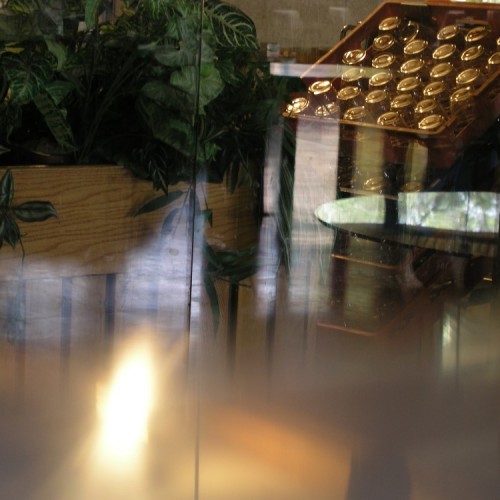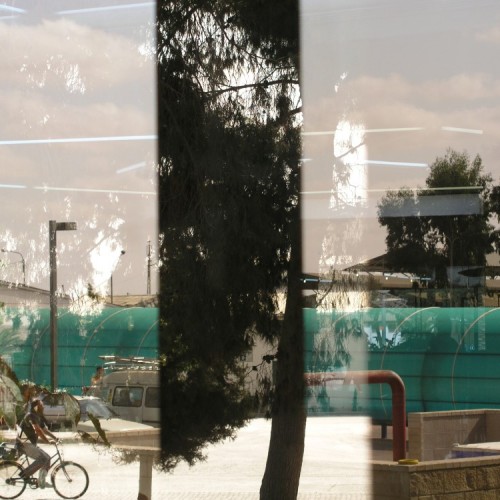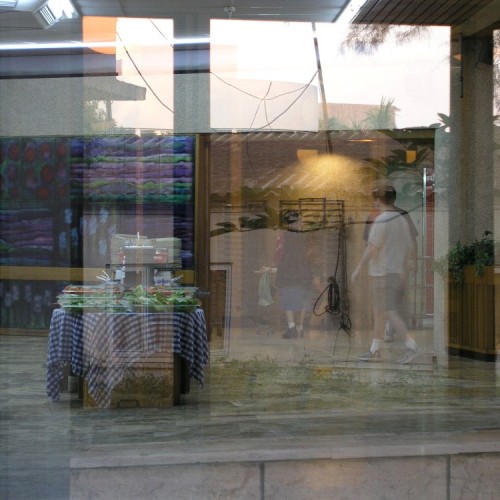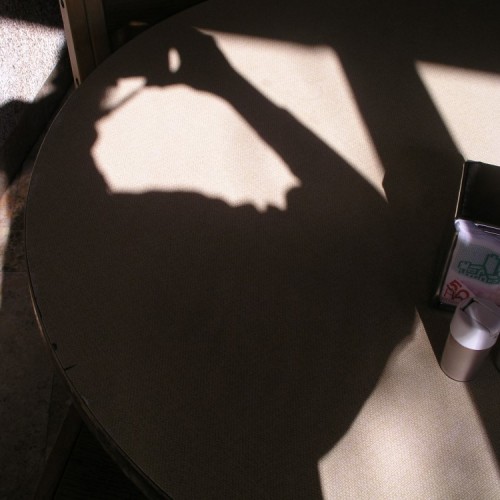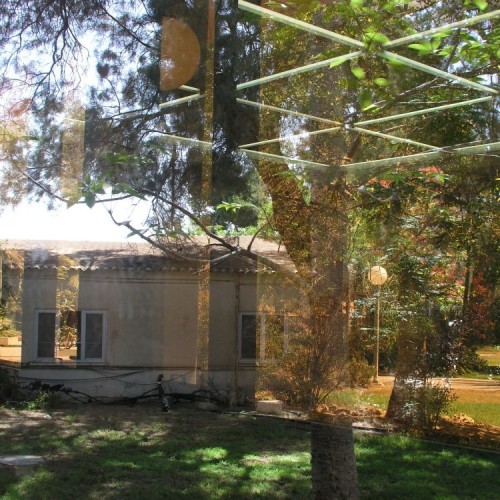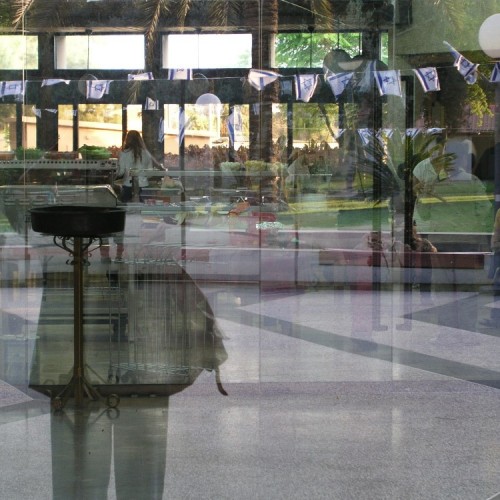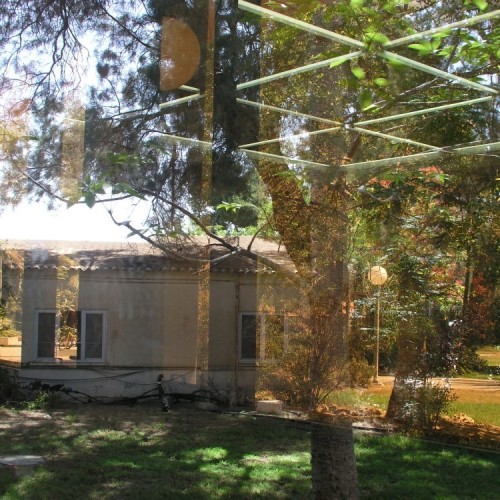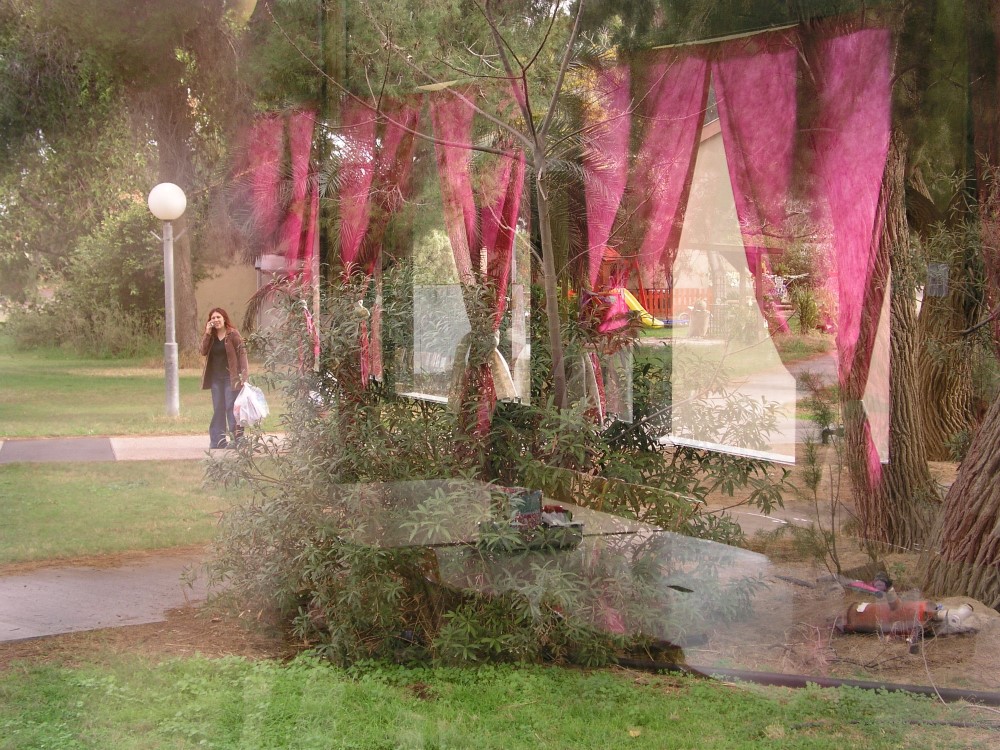
For the past four years, the dining hall in Kibbutz Hatzerim has been Nani Stav’s arena of photography. The transparency of the windows, opening it up to the kibbutz public grounds on three sides, summons all of the dining hall surroundings into it – the big lawn, the armory building, the old Mazkirut (administrative) building (which was turned into an office), the silo (now engulfed by the factory built around it), the veterans’ living quarters (dubbed The Vatican), the footpaths and sidewalks. At the same time, its contents are exposed to the outside look – tables, curtains, chairs, rows of round lamps and neon lights.
Stav uses a digital camera, without computer manipulation or special effects. Photographing windows, Stav emphasizes their material and symbolic qualities. Through their transparent glass the physical presence of the dining hall turns into an illusory representation. The transparency of the concrete and glass building turns the main image in her photographs into an ungraspable object, one whose most real embodiment is in light, shadow, and reflections. The transitions between the real and the perceived, the realistic and the dreamlike, are her means of expression, conveying an existential experience of life on the kibbutz. Her photographs depict it first and foremost as a transitional, ambiguous existence – in this particular case, an uncertainty manifested in the many changes that the kibbutz is presently undergoing.
Twilight is the time between the setting of the sun and the rising of the stars. An intermediate state that soon ends and yet returns cyclically. Nani Stav strives to catch the moment in her photographs; to keep alive the memory of the kibbutz dining hall as the artery of its life’s blood.
Nani Stav
Twilight
Curator: Yaniv Shapira
February-April 2008


